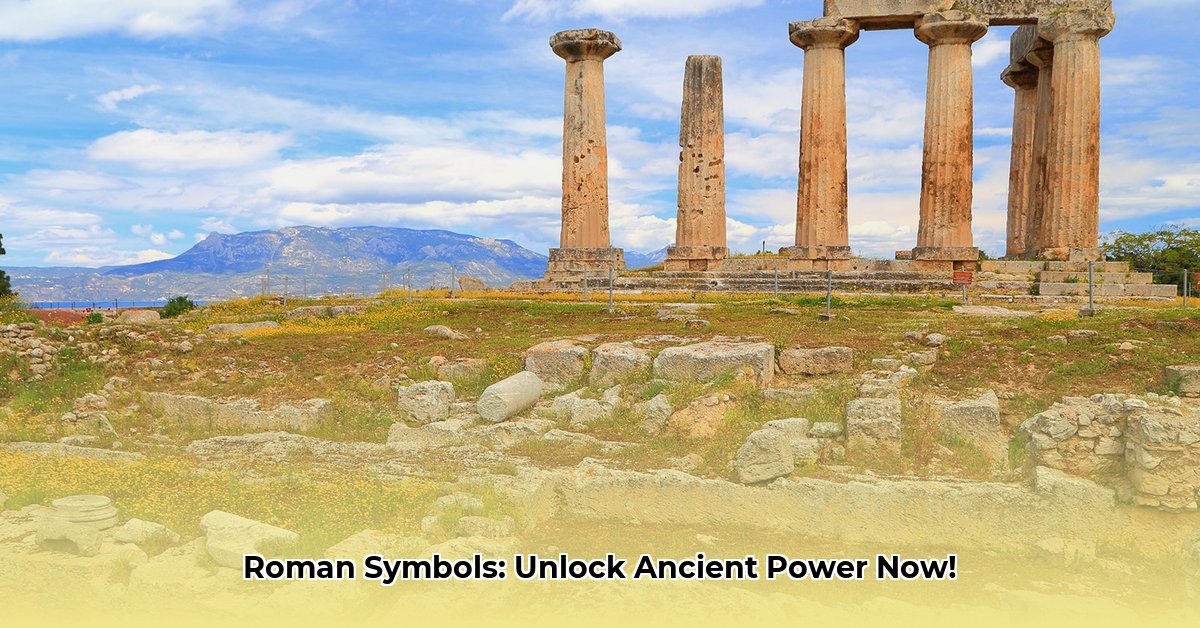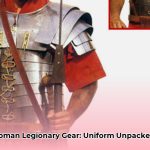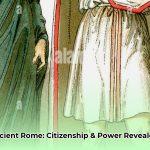Have you ever paused to consider the silent language embedded within the ancient stones of Rome, or the powerful emblems that adorned its legions and public spaces? These weren’t mere artistic flourishes; they were the potent visual vocabulary of an empire that profoundly shaped Western civilization. From the soaring Aquila, the eagle standard that embodied Rome’s military might, to the tightly bound Fasces, symbolizing unity and authority, these ancient Roman symbols and meanings offer an unparalleled window into the very soul of a society. Learn more about these Roman emblems and their impact. They communicate its power, its foundational myths, its core beliefs, and its enduring values.
This comprehensive exploration delves into these iconic emblems, unraveling their intricate historical contexts and tracing their lasting influence across centuries, even into contemporary society. We will journey from the mythical She-Wolf, whose nurturing embrace defined Rome’s very genesis, to the omnipresent S.P.Q.R. (Senatus Populusque Romanus), a declaration of shared governance. Furthermore, we will examine the Rod of Asclepius, a symbol intrinsically linked to healing and still profoundly relevant in modern medicine, and the revered Laurel Wreath, the timeless mark of glory and victory. Prepare to uncover the captivating narratives behind these powerful symbols and grasp how their resonance continues to echo powerfully in our world today.
Ancient Roman Symbols: Their Nature, Evolution, and Lasting Legacy
Key Takeaways:
- Roman symbols were dynamic tools embodying military strength, political structure, cultural values, and religious beliefs.
- Symbols like the Aquila (eagle) and S.P.Q.R. (“Senatus Populusque Romanus”) visually reinforced societal norms and imperial aspirations.
- The Romans adeptly adopted and adapted symbols from conquered cultures, such as the Draco banner from Dacia, demonstrating their pragmatic and expansive approach.
- Understanding these emblems requires an interdisciplinary lens, incorporating insights from archaeology, art history, and political science.
- Their continued presence in modern iconography underscores Rome’s pervasive and indelible impact on global culture.
Roman symbols were never static decorative elements; they were the vibrant, continuously evolving heartbeat of an expanding empire, meticulously crafted to project power, solidify identity, and convey a carefully curated imperial message. So, how did these symbols transform into such potent communicators, becoming intricately woven into the very fabric of Roman society and beyond? Let us decode their transformative journeys and enduring significance.
The Eagle’s Ascent: Aquila and Roman Military Might
Imagine the disciplined ranks of Roman legionaries, not only armed with their gladius and scutum but also marching under the awe-inspiring banner of the Aquila, or eagle. This was far more than a mere standard; it was the sacred essence of the Roman legion, embodying its fighting spirit, raw courage, and the powerful, almost spiritual, notion of Rome’s eternal endurance. The Aquila was unequivocally the living soul of the Roman army, a profound Roman military symbol.
Initially, various animal totems held significance for different Roman military units. However, the eagle progressively ascended to preeminence, becoming the singular, most revered standard of the Roman legion. This pivotal transformation formally occurred following critical military reforms initiated by Gai Gaius Marius around 104 BCE. Its loss in battle was considered an unimaginable disaster, a devastating blow to a legion’s honor and pride, often leading to subsequent military campaigns solely for its recovery. This critical focus underscored the symbol’s immense importance, demonstrating Rome’s unwavering determination and asserting its indomitable will. The eagle, linked to Jupiter, the king of the gods, strategically aligned with Rome’s aspirations for divine favor and absolute earthly dominion.
Strength in Unity: The Enduring Legacy of the Fasces
Consider the fasces: a seemingly simple bundle of wooden rods tightly bound together with a leather strap, often enclosing an axe whose blade protruded from the side. While its origins trace back to the Etruscans, an influential pre-Roman civilization, the Romans profoundly adapted it, imbuing it with a powerful message of collective strength derived from unity. It illustrated that individual elements, when combined, become far more formidable than when separate. This powerful emblem eloquently conveyed the significance of Roman symbols in political discourse and civic administration.
High-ranking Roman magistrates and officials were invariably preceded by lictors, attendants who carried the fasces, thereby conspicuously signaling the official’s authority and jurisdiction, specifically their power to enforce laws (the rods) and inflict capital punishment (the axe). The number of rods could vary, indicating different levels of authority. Interestingly, this symbol, originally a representation of civic unity and state power, was notably adopted by some political movements in the 20th century. This historical reinterpretation highlights how historical Roman emblems can be recontextualized and even distorted, serving purposes far removed from their initial intent, a stark reminder of the complex journey of Roman iconography through time.
The She-Wolf’s Embrace: Nurturing the Roman Identity
Have you encountered the foundational myth of Romulus and Remus, the legendary twin founders of Rome? The iconic “Capitoline Wolf” bronze statue, dating back to the Etruscan period and later modified with the addition of the twins during the Renaissance, vividly depicts a female wolf, a Lupa, suckling these infants. In ancient Roman culture, the wolf symbolized fierce protection, nurturing care, and even raw instinct, suggesting that Rome itself was divinely protected and nurtured on its destined path to greatness.
According to the legend, Romulus and Remus, abandoned by their uncle Amulius, were found and nursed by the she-wolf on the banks of the Tiber River before being discovered and raised by the shepherd Faustulus. This powerful origin story became inextricably linked to Rome’s identity, symbolizing resilience, divine providence, and the city’s tenacious spirit. This potent Roman cultural symbol is not confined to ancient texts; its resonance continues today, for instance, prominently displayed on the logo of the modern-day AS Roma football team, and various municipal emblems throughout Italy. This enduring presence underscores how the narrative of Romulus and Remus, and the nurturing she-wolf, remains deeply embedded within Italian heritage and national identity.
S.P.Q.R.: A Declaration of Shared Power
What about the enigmatic initials S.P.Q.R.? Standing for “Senatus Populusque Romanus,” which translates to “The Senate and the People of Rome,” this was far more than a mere acronym. It served as a constant affirmation that sovereignty resided jointly with both the venerable Roman Senate and the collective Roman citizenry. It projected an ideal of partnership and shared responsibility in the governance of the Roman Republic, a foundational aspect of Roman republican symbols.
S.P.Q.R. permeated daily life in ancient Rome, ubiquitously emblazoned on public monuments, governmental buildings, military standards (vexilla), and even currency. It was a pervasive reminder of collective responsibility and shared purpose in strengthening the burgeoning empire. Even as the Republic transitioned into a centralized Empire, S.P.Q.R. deliberately remained a prominent symbol under emperors like Augustus, strategically serving as a powerful historical anchor, reminding citizens of Rome’s republican foundations, even while emperors wielded absolute authority. Remarkably, even millennia later, S.P.Q.R. can still be observed throughout modern Rome, adorning manhole covers, fountains, and public buildings, a powerful testament to the city’s enduring legacy and the profound symbols of power in Rome.
Healing Through Symbols: The Rod of Asclepius
Picture a single serpent coiled elegantly around a staff. Does this image evoke a familiar association? This is the Rod of Asclepius, the authentic and widely recognized symbol of medicine and healing. The Romans inherited this potent emblem from the Greeks, who revered Asclepius as their deity of healing and medicinal arts. His cult centers, known as Asclepieia, were sites of healing where non-poisonous snakes were often allowed to roam freely, contributing to the symbol’s imagery.
The serpent’s unique biological ability to shed its skin was seen as a powerful metaphor for renewal, rebirth, and continuous rejuvenation, directly linking it to the process of healing and recovery from illness. The staff, in turn, effectively represents the steadfast authority, guiding support, and ethical conduct a compassionate physician offers to their patients. This revered symbol is ubiquitous in contemporary medicine, prominently adorning hospitals, ambulances, and medical organizations worldwide, including the World Health Organization (WHO). Its pervasive presence underscores the profound and lasting impact of ancient Roman and Greek intellectual traditions on modern healthcare practices.
Victory Crowned: The Laurel Wreath
The laurel wreath, often culturally intertwined with the supreme deity Jupiter and the god Apollo (patron of poetry, music, and prophecy), was the ultimate embodiment of victory, honor, and achievement. Made from branches of the bay laurel tree, which does not wilt, it symbolized immortality and enduring triumph. Awarded as a civic crown (corona civica), it stood as the second-highest honor a Roman citizen could receive, bestowed upon those who had saved the life of another Roman citizen in battle. This public recognition reflected profound admiration and distinction.
The laurel wreath’s association with triumph extended to military commanders celebrating a Roman triumph, poets lauded for their literary excellence, and athletes victorious in contests. Emperors, particularly Augustus, frequently depicted themselves wearing the laurel wreath, signaling their connection to Apollo and their own imperial victories. This iconic symbol continues to resonate today, universally recognized in academic ceremonies (as a mark of graduation), sports victories (such as Olympic medals often featuring laurel designs), and various forms of ceremonial recognition, showcasing the lasting legacy of Roman accomplishments and imperial Roman symbols. Imagine the immense pride a citizen must have felt upon receiving such a distinguished mark of distinction.
The Draco: A Serpent Standard’s Strategic Intimidation
Beyond the iconic Aquila, the Roman military also effectively utilized other powerful standards. The Roman Draco, a distinctive serpentine dragon banner, served as another significant military ensign, particularly adopted by Roman cavalry units. Its origins are most likely traced to the Dacians, a people conquered by Rome in the early 2nd century CE, who prominently used a similar dragon standard in battle.
The Draco was typically made of cloth, often with a bronze head, and would “stream” in the wind, resembling a serpent in motion, often with a rattling sound device attached. This made it a visually intimidating presence on the battlefield, especially for the cavalry, adding to the psychological warfare employed by the disciplined Roman army. The adoption of the Draco by Rome exemplifies its pragmatism in incorporating effective elements from conquered cultures into its own vast military and symbolic repertoire, demonstrating adaptability and a sophisticated understanding of how to leverage existing powerful imagery.
The Knot of Hercules: A Symbol of Enduring Bonds
Known variously as the Herculean Knot, Love Knot, or Marriage Knot, this ancient symbol was exceptionally popular in both Greek and Roman cultures. It was formed from two intertwined ropes, creating a strong, complex knot, and was considered an important protective charm.
In Rome, the Knot of Hercules was a customary part of a bride’s wedding dress, specifically tied around her waist. Only the groom was permitted to untie it, symbolizing the consummation of the marriage and the unbreakable bond being formed. Hercules, a figure of immense strength, was revered as a protector of married life in Rome. Consequently, the Herculean Knot became a lasting symbol of a long, happy, and fruitful married life, representing enduring commitment and unity. While replaced by wedding bands as the prominent marriage symbol today, its legacy as a token of lasting love persisted through medieval times.
The Cimaruta: Italian Folk Charm and Triple Goddess
The Cimaruta, an intricate Italian folk amulet, was a popular charm in Roman culture, particularly associated with protective magic for children. Its name, “Sprig of Rue,” refers to one of the most sacred Italian plants, believed to ward off evil.
The charm was typically crafted from silver and shaped like a rue sprig with three distinct branches. These branches were designed to symbolize the triple aspect of the Roman moon goddess, Diana Triformis — representing the maiden, mother, and crone. From these branches, smaller charms were often hung, making each Cimaruta unique. Common additions included a key (for access to knowledge or power), a fish (fertility, abundance), a hand (to fend off evil), a flower (protection), and a crescent moon (often representing the horns of a god or the lunar cycle). The Cimaruta was commonly placed over children’s cribs or worn around the neck, offering protection from the “evil eye” and various misfortunes.
Roman Numerals: A Lasting System of Representation
Perhaps one of the most practical and enduring Roman contributions to daily life, Roman numerals are a numeric system that originated in ancient Rome. Unlike positional systems (like our modern Arabic numerals), Roman numerals use combinations of letters from the Latin alphabet (I, V, X, L, C, D, and M) to signify different values.
While their use for complex calculations was cumbersome, they were highly effective for record-keeping, counting, and marking dates and sequences. They represent Rome’s organized approach to administration, commerce, and public works. Though largely supplanted by Arabic numerals for everyday arithmetic, Roman numerals still hold significance in various modern contexts: clock faces, book chapter numbers, architectural inscriptions (e.g., foundation dates on buildings), and papal regnal years. Their lasting presence today highlights the profound and practical influence of Roman culture and history on our modern society.
The Balance of Justice: Scales and the Rule of Law
The Scales of Justice, a significant symbol deeply rooted in Roman culture, continues to be a universal emblem in legal systems around the world. This powerful symbol represents the fundamental concepts of justice, fairness, and impartiality.
In Roman mythology, the scales were held by the goddess Justitia, often depicted blindfolded, symbolizing the impartial application of law, free from personal bias or external influence. The scales themselves represent the meticulous weighing of evidence and arguments in a legal case. The ideal depiction shows two pans suspended from a horizontal beam, with each pan holding an equal weight, symbolizing the need for a fair and balanced assessment of facts and arguments to arrive at a just decision. This symbol serves as a constant reminder of the importance of upholding the rule of law and ensuring that everyone is treated fairly within the legal system. Its ubiquity in courthouses and legal institutions underscores its enduring relevance.
The Chariot: Triumph, Power, and Progress
The chariot, a dynamic and visually striking symbol, represents power, victory, and triumph in ancient Rome. It was often associated with the Roman god of war, Mars, and was a central feature in grand military parades and triumphal processions, signifying the successful conquests and military might of the Roman Empire. Victorious generals would ride in chariots through Rome, culminating in sacrifices to Jupiter.
In Roman mythology, the chariot was also linked to various gods and goddesses, such as Apollo, who drove the chariot of the sun across the sky daily, and Aurora, the goddess of the dawn. Depictions of the chariot can be found across various forms of Roman art and architecture, including elaborate sculptures (like the Quadriga, a four-horse chariot), mosaics, and coins. As a symbol, the chariot conveys ambition, determination, and the relentless pursuit of success. It embodies the fast-paced, ever-advancing nature of life and the empire’s drive for expansion and dominance, leaving a legacy of military prowess and cultural achievement.
Unlocking The Past: Interpretive Strategies for Roman Symbols
Understanding ancient Roman symbols and meanings is not merely an academic exercise; it offers crucial insights for various stakeholders today. These symbols serve as powerful conduits to comprehending the empire’s extraordinary rise, its core values, and its pervasive, lasting impact on global culture.
| Stakeholders | Interpretive Strategies and Benefits |
|---|---|
| Educators & Academics | Strategy: Integrate Roman symbols into history, civics, and art curricula by analyzing their evolution (e.g., Aquila’s shift from varied standards to singular emblem), regional variations, and how they were strategically employed (e.g., S.P.Q.R. on public works to reinforce civic identity). Emphasize comparative studies with symbols from other empires to highlight unique Roman contributions. Benefit: Enhances student engagement, fosters critical thinking about the evolving meanings of cultural markers, and promotes interdisciplinary study of iconography and power structures. |
| Historians & Researchers | Strategy: Conduct deeper iconographic research into lesser-known Roman symbols (e.g., specific legionary insignia, provincial adaptations) and their socio-political contexts. Analyze the strategic deployment by emperors to legitimize rule (e.g., Augustus’s use of Laurel Wreath and S.P.Q.R. to link to republican virtues). Investigate the role of symbols in imperial ascent, consolidation, and decline. Benefit: Unlocks nuanced understandings of Roman power dynamics, cultural assimilation, and propaganda, contributing to richer historical narratives and comparative empire studies. |
| Cultural Institutions & Museums | Strategy: Curate compelling exhibitions showcasing Roman artifacts and symbols with detailed, accessible explanations of their historical significance, material culture, and modern interpretations (e.g., the Rod of Asclepius in modern medicine). Develop interactive digital resources and virtual tours that bring the symbols to life, illustrating their original settings. Benefit: Educates diverse public audiences, promotes historical preservation, and highlights the ongoing relevance of symbolic literacy in understanding global heritage and contemporary influences. |
| Policy Makers & Public Servants | Strategy: Analyze the contemporary use and reinterpretation of symbols, including those with Roman origins, in political discourse, public messaging, and national identity formation. Evaluate how these visual cues are utilized (e.g., Fasces in governmental seals) to evoke specific historical legacies, build consensus, project authority, and influence public perception. Benefit: Promotes informed civic engagement, equips leaders with tools to critically analyze symbolic communication, and encourages thoughtful consideration of historical precedents in modern governance. |
| Art & Design Professionals | Strategy: Study the aesthetic principles and compositional logic of Roman symbols, their craftsmanship, and their adaptation across different media (e.g., coinage, sculpture, architecture). Explore how classical Roman symbolism has been reinterpreted and integrated into later artistic movements and popular culture. Benefit: Inspires new creative works, informs historically accurate representations in media, and fosters a deeper appreciation for the enduring visual language of one of history’s most influential civilizations. |
In essence, Roman symbols provide a fascinating and indispensable lens through which to comprehend the empire’s extraordinary rise, its core values, and its pervasive, lasting impact on global culture. So, the next time your gaze falls upon an emblem featuring an eagle, a laurel wreath, or even the familiar S.P.Q.R., remember the deep and rich history it invariably carries, a testament to symbols that continue to shape our world.










